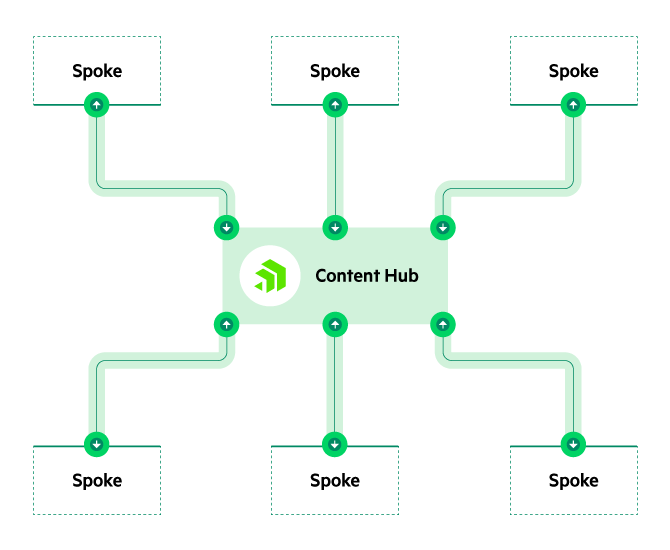How to Develop a Content Marketing Strategy on a Budget

Content marketing should be an essential part of your inbound marketing and lead generation strategy. Marketers consistently say it provides the greatest ROI. When you’re trying to compete with well-financed competitors, however, it can be tough.
According to the HubSpot state of marketing report, 70% of marketers are investing in content marketing and according to SEMrush more than three-quarters of companies are using content marketing teams. Still, there are ways you can still execute a successful content marketing strategy when you’re working on a budget.
Six Keys to Developing a Content Marketing Strategy on a Budget
You need a systematic approach to content marketing to be successful. It starts by doing your due diligence on the assets you already have and what your competitors are doing online.
1. Research Content Topics
An internal content audit should catalog and evaluate what marketing materials and content you already have created. Start by making the list and then analyze every piece’s performance. You need to determine two things:
- What content is performing well
This includes measuring which content gets engagement and which leads to conversions. - What content is missing
Identify gaps in content topics that need to be addressed.
An external audit, or competitive audit, should look for opportunities that your competition isn’t realizing but you could. You also want to identify your competitors’ best performing content. You’ll want to develop content that speak to those topics as well.
You can do a competitive audit by using some of the content marketing research tools out there, but if you don’t have budget for a subscription you can always do it yourself too by searching for the terms you want to rank and be known for and seeing what content from like companies is returned. Identify the keywords that are important to your business, type them into Google, and see what pops up. The content near the top should also be on your development list. You can use and “incognito” window to make sure none of your previous search history influences the results.
2. Create Content Topics Outline
If you’re starting out, you’ll want to create your basic content that has a long shelf life on your site. These are things that people search for when looking for the solutions you offer. That’s your first job.
A lot of companies find success with a hub-and-spoke content marketing strategy.

The Content Hub-and-Spoke Strategy
The hub part covers broad subjects and can be a jumping-off point for deeper insights or related content. If you’re selling flooring, for example, your hub might be about how to pick the right flooring for your home. Your spokes might go into more detail on hardwood, what fiber counts mean, the benefits of low-pile carpets, best carpets for high-traffic areas, the importance of stain resistance, etc. It’s not uncommon for B2C and B2B companies to have dozens of content hubs each with several dozen related topics.
The big benefit of this is that you can capture people searching for specific things and then link all of your content together to create a great resource.
3. Develop a Content Marketing Calendar
Developing the calendar is the next—and one of the most important steps—in the process. Focus on the type of content you need to develop. Commit to a schedule so that you regularly have fresh content on your site along with marketing support from social media and other lead generation drivers.
Types of Content
- Evergreen content will live on your site for some time. It can continue to generate leads over time because it answers questions that people are searching for.
- Thought leadership will demonstrate expertise in your industry and helps create trust.
- Topical content takes advantage of trends and events to get your brand included in the conversation.
As you develop your content plan, you’ll want to foster conversations between marketing and sales teams too. There should be alignment when it comes to goals, outcomes, and initiatives. Ultimately you do want your website content to be attracting viewers for your but it you want it to be relevant traffic that will convert.
4. Start Content Creation
If you’ve gotten this far, you have probably identified a pretty long list of what needs to be created. It may even feel like an overwhelming task. While some businesses have in-house content marketing teams, it’s not the only approach that works. Other businesses use various strategies to create compelling content.
You can ask your in-house experts to contribute to your effort. You can hire freelance writers to generate keyword-rich content. You can reach out to industry leaders, influencers, and product specialists to create guest blog postings. You can also hire content marketing agencies that specialize in SEO to handle it for you. Check out our amazing network of Sitefinity digital agency partners in case there’s one that fits your needs there.
When it comes time to create the content, you need to answer a few questions before someone starts writing:
- What is the goal of the content?
- What do you want people to do when they’re done?
- What are the keywords and phrasing that will help people find it?
One thing to always keep in mind is that when people find your content, you’ve got to deliver value. If visitors don’t find it useful, they’ll leave quickly, and it can tarnish your brand. When they’re searching for something, they want answers.
5. Start Promoting Content
Once you’ve generated a piece of content, your job’s not done. You’re competing for attention against everyone else that’s doing the same thing.
Remember our example about flooring? If you enter how to find the right flooring for your home into Google, you’ll generate nearly a billion results.
That’s a lot of competition. You need a strategy to break through the clutter and get people to find your content.
Consider using paid search or targeted social media to increase your reach and generate engagement for content that’s designed to convert sales leads or to direct sales. You should also exploit free or low-cost ways to add to your exposure, including:
- Adapting content for social media platforms
- Email or email newsletters to prospects and customers
- Cross-linking from relevant content throughout your website
- Contacting industry influencers for comments
- Adding a link to your content on all outgoing company email
Brainstorm other ways to promote your content with your team. There are plenty of free and low-cost ways to do grass-roots marketing. One effective approach might include finding community sites where people post questions. You can weigh in with answers to the questions and direct people to your content for more information. Anytime someone is searching for the answer, you’ll then be part of the conversation.
6. Measure Content Marketing Results
The final step is to measure the success of your content against the goals you established earlier. It’s only successful if it meets the goals.
When you find topics that work and lead to conversions, develop additional content ideas to increase the impact. You may be able to expand on the topic, spin off more in-depth content about particular aspects, or find compatible content. When something isn’t working as planned, take a moment and see if you can figure out why. Either rework it or move on to other content.
One of the unheralded results of effective content marketing is that it has a cumulative impact. The more traffic you get and the more links you get from high authority domains, the better your content will do in search rankings. The more content you have that ranks well, the better your overall website will do.
A Final Word of Warning
SEO is a long-term play. You can post spectacular content and not get any eyeballs in the short-term. Content marketing works best over time. And of course it helps to have an excellent web content management system working for you.

Jennifer McAdams
Jen McAdams was Vice President of Global Demand Generation and Field Marketing.
